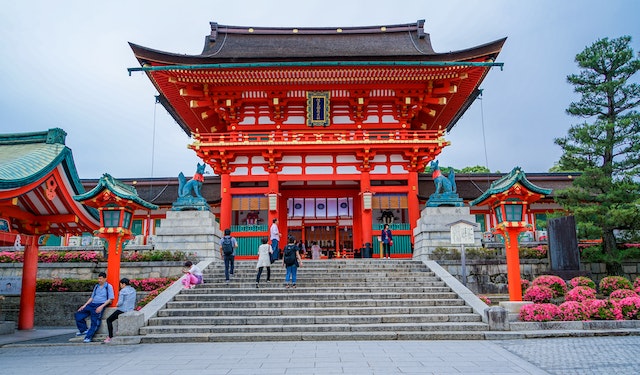Fushimi Inari Shrine is one of the oldest Shinto shrines in Japan. With a history dating as far back as the 8th century, it is also one of the most important Shinto shrines in the country and a visually impressive place of worship at that. It has also been identified as one of the country’s important cultural properties.
Kyoto has always been known as the center of Japanese culture. This has a lot to do with its previous status of being the old capital before it was moved to Tokyo. Home to around 2000 temples and shrines, one of its most visited and most popular is Fushimi Inari Taisha.
The designated head shrine of around 30,000 shrines across the country, dedicated to Inari, it’s an impressive sight to behold. It is also highly popular for its senbon torii. These vermillion-colored torii gates line the path within the shrine complex leading up to Mount Inari with numbers reaching several thousand.
A shrine with over 1300 years of history
Dedicated to Inari, it is believed that Fushimi Inari was established in 711 AD. With over a thousand years of history, the shrine is considered to be one of Kyoto’s oldest shrines, along with the Kamigamo and Shimogamo shrines. The establishment of the shrine is credited to the powerful Hata clan, who rose to prominence around the 2nd-6th centuries.
According to legends, Hata no Irogu, an ancestor of the Hata clan, used mochi or rice cakes when practicing marksmanship. One time he was doing so, one of his arrows pierced a cake which then transformed into a swan. The story goes that the swan flew in the direction of the now Mount Inari where rice then started to grow afterward. It is this legend that gave birth to the shrine’s god, Inari Okami who then became the god of rice, prosperity, and sake. He is also a patron for manufacturers, merchants, and businesses.
About a hundred years after its founding, Fushimi Inari started to be associated with Shingon Buddhism. The sect’s founder, a monk named Kukai chose Fushimi Inari as the guardian shrine of Toji Temple, whom he was designated as an abbot at the time. This led to the shrine being relocated from its original location to be closer to the temple. The Inari shingyo or Inari sutra, a Buddhist chant, is proof of the shrine’s Buddhist association.

In 942, Fushimi inari was designated as the highest-ranked Shinto shrine. It is also the headquarters of all the Inari shrines in the country— numbering around 30,000. Later on, the shrine earned the designation of being an important cultural quality. Today, it is one of Kyoto’s most popular and most visited sites.
Notable features
Main shrine
The main shrine is situated in the lower complex, near the mountain base. Before you reach this part, you will first pass through the Romon Gate. It was Toyotomi Hideyoshi, one of the country’s renowned samurai warlords and rulers who had it built.
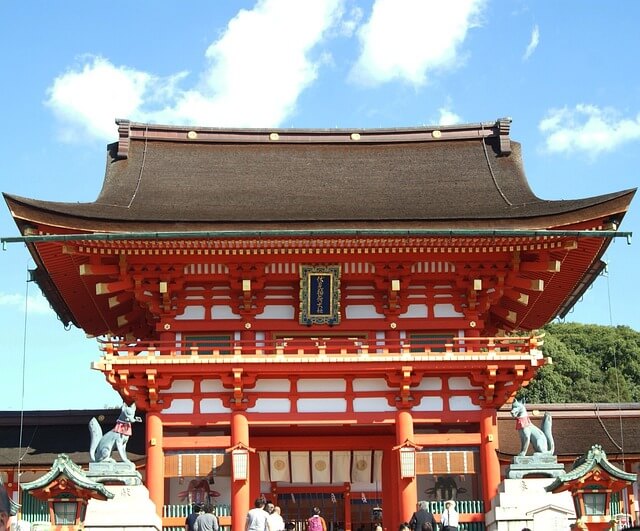
Upon passing the Romon gate, you will see the main shrine. The building is magnificent in its red hue. It’s here where you can say your prayers, make a coin offering, and ring the bells. If visiting the shrine for the first time, it helps to know some basic shrine etiquette. Do note visitors are not allowed to take photos of the interiors of the main hall. This is enforced the moment you ascend the stairs leading to the main hall.
At the back of the main shrine grounds are the senbon torii, the highly popular trail of red torii gates that lead to Mount Inari. There is also an inner and outer pavilion. Shrine worshippers say their prayers to Inari in the inner pavilion. Meanwhile, the outer pavilion serves as the setting for ritual Shinto dances or kagura.
Fox statues
Among the things that will stand out while walking through the shrine are fox statues. Fushimi Inari is known for having a ton of fox statues in various shapes, styles, and sizes. This is because they are closely associated with Inari, and are believed to be his messengers.
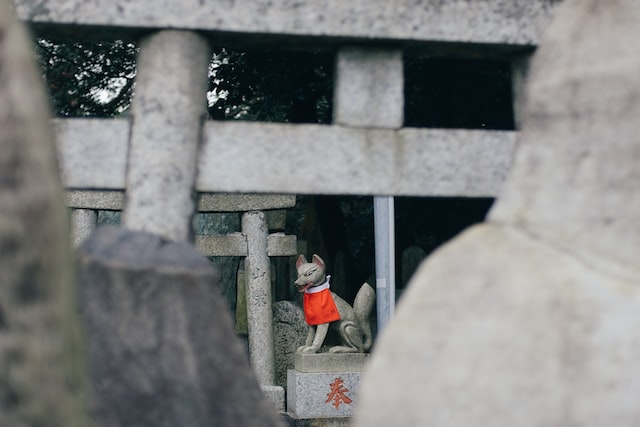
Most of the statues are depicted holding something beneath their front paws or in their mouths. This could be in the form of a stone that is said to represent Inari’s spirit. In some cases, it could be a key to a granary. Most of the statues within the shrine complex are made of stone. However, there are also porcelain ones, which are usually found on the altars.
The foxes within the shrine are supposed to be mythical and not just your ordinary fox. As such, they are supposedly not visible to normal human eyes. This is why it is common to see them depicted in the color white. One fun thing to do when visiting the shrine is to count how many of these fox statues you will encounter!
Fox souvenirs
Due to the shrine’s strong connection to foxes, many of the goods sold at the souvenir shops around Fushimi Inari are related to the animals. Handmade fox masks made from washi paper are very particular among visitors, especially during festival season. These masks aren’t just good for wearing but can make for lovely home decorations as well.
You can also get your hand on some delectable goodies from the shops around. For instance, rice crackers molded in the shape of a fox can be bought here. What’s interesting is that these rice crackers have been made from the same recipe that has been around for more than a century old. These delicate crackers are individually made from sugar flour, sesame and white miso.
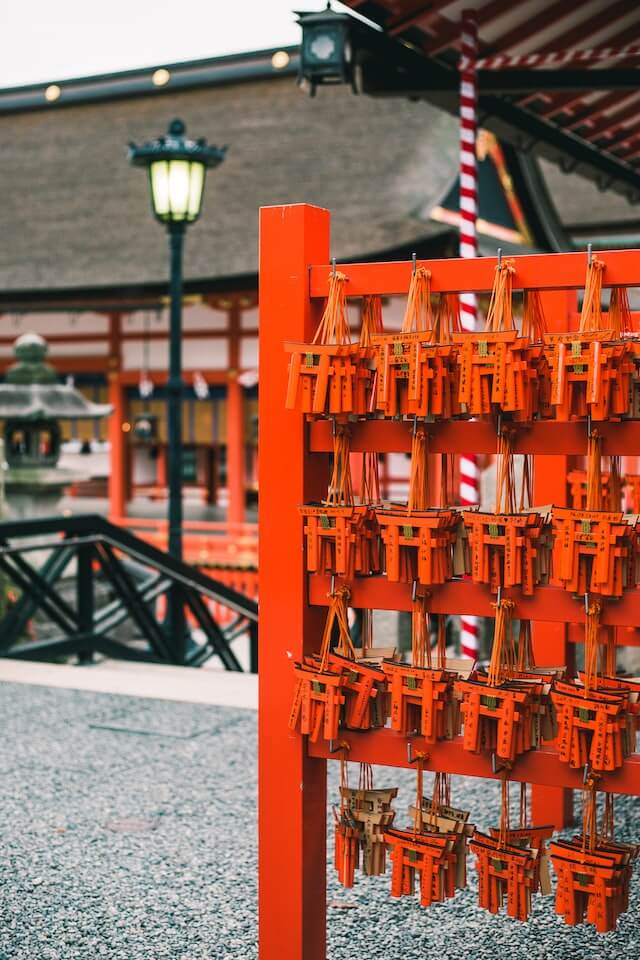
Fox amulets
Good luck charms or omamori are other popular items that are sold in many shrines and other religious sites all over the country. They typically come in different styles and are intended for a variety of purposes. At Fushimi Inari Shrine, it comes as no surprise that the omamori sold here are also fox related. From wallet cards and embroidered pouches to key chains, these are perfect gifts for family and loved ones not only for the good luck and charm they bring but for the protection they offer as well.
Fox ema
Another popular item in shrines around Japan is ema. These are small wooden tablets on which shrine visitors can write their wishes on. They are then left hanging at the shrines in the hopes that the deity will receive them and fulfill them.
Typically, ema comes in a rectangular shape. However, at Fushimi Inari, you guessed it— they’re foxed-shaped! Available for purchase at the shrine for ¥500, just write your wish on the back of the tablet. On the front, do your best to draw the face of a fox before hanging it at the shrine.
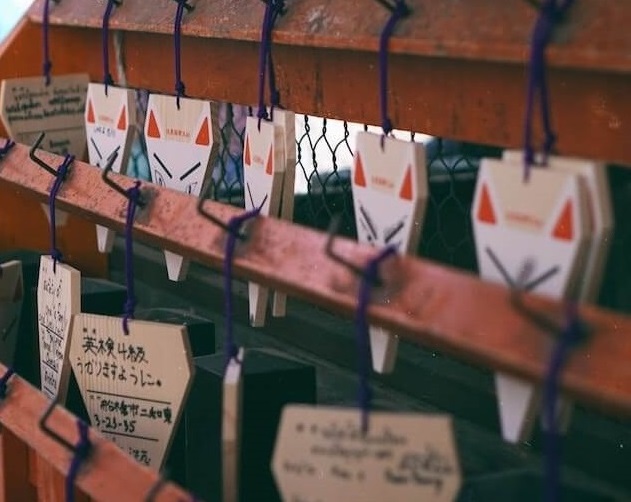
A popular attraction
Every year, millions of people not only from Japan but also from the rest of the world visit Fushimi Inari. Most come here to play for business success, fruitful harvests, and prosperity. Peak visit happens during the New Year when the Japanese visit their local shrines to offer prayers. Known as hatsumode, it’s one of the most important calendar days in the country.
It is difficult to figure out why the shrine is so popular. Perhaps this may have to do with how Inari, the shrine’s deity, serves as an all-powerful, all-purpose deity. Things that have to do with good luck and prosperity are within his powers. Inari’s versatility allows it to take on a variety of forms depending on what a worshipper requires. Being an androgynous bodhisattva, he is known to take on both a female and male form. In addition, he is also believed to take on the figure of a snake, dragon, or even his own messenger, the white fox.
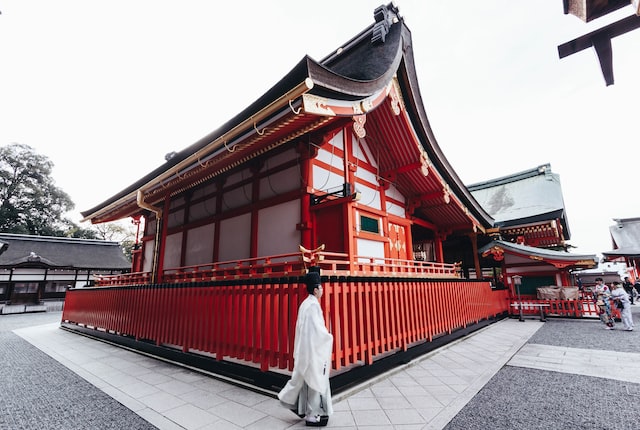
When Inari was popularized across the country, Buddhism was also undergoing expansion at the same time. As a result, traditions of both Shinto and Buddhism ended up congregating around Inari’s figure. The many divine attributes and qualities of the deity only became enriched over the years. Many even believe that Inari is not just one single deity but a collective of kami instead.
During the Edo period, Inari was considered a patron deity of warriors and blacksmiths. This led many feudal lords to build Inari shrines in their numerous domains across the country. This is also the reason that there are over 30,000 Inari shrines— all subsidiaries of Fushimi Inari, around the country.
Senbon torii
One cannot simply talk about Fushimi Inari Taisha without mentioning its very popular torii gates. The Senbon Torii is located along the back of the shrine grounds and serves as the entrance to the hiking trail leading up to Inariyama with vermillion-colored torii gates covering the path.
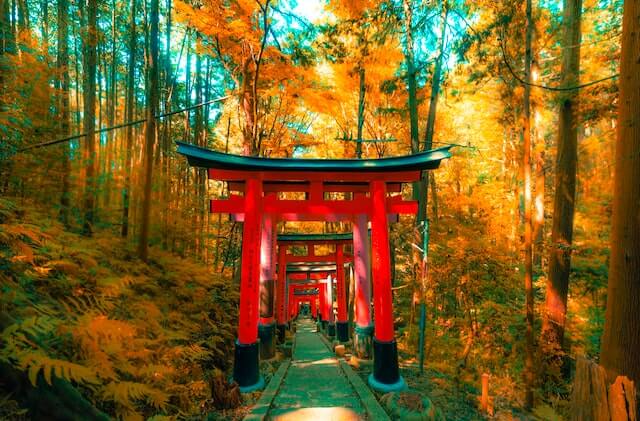
The torii gates are numbered to be several thousand. It’s hard to truly determine the actual figures as this does fluctuate. This is because the gates are constantly added every time there are new donations while at the same time, those that have deteriorated over time are also removed. These gates are shrine donations to serve as an offering to Inari. They’re mostly from Japanese companies and corporations as a torii can cost as much as over a million yen, so most individuals cannot afford them.
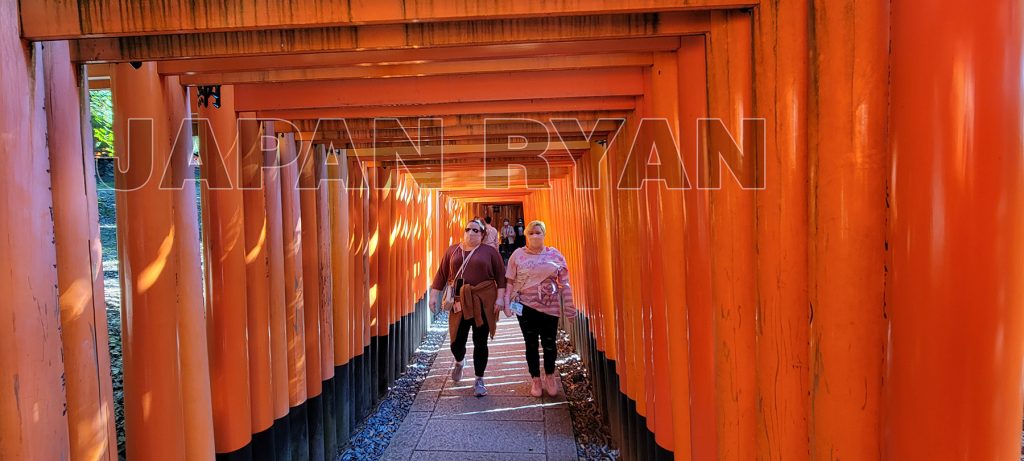
It was during the Edo period when the practice of donating torii gates first kicked off. When money started becoming the means of conducting business transactions instead of rice, businessmen decided to donate huge sums so they can buy a torii and offer it to the shrine. The practice remained since then.
Walking up the path is quite a feat, as it goes pretty high. The walk is considered good for you, as the cardiovascular exercise can help improve heart health by strengthening the heart and lungs, reducing the risk of heart disease, and lowering blood pressure. This type of long walk can also help increase stamina, boost energy levels, and reduce stress and anxiety.
In addition, walking all the way up the steep shrine path provides a low-impact workout that can help improve balance, stability, and coordination, making it a great option for people who have joint pain or other physical limitations. The uphill climb also helps to build and strengthen muscles in the legs, hips, and glutes, and it can help increase flexibility and range of motion in the hips and legs. This can also help improve posture, prevent back pain, and reduce the risk of falls in older adults.
Climbing up
At 233 meters high, Mount Inari might seem too daunting a spot to climb, but it is not that difficult. This is because it’s mostly just flights of stairs that you need to tackle on the way up. Besides, you can set your own space when climbing up and down. In most cases, it could take around 4 hours to climb up and back down the mountain.
The shrine is also open 24/7 which makes it easier to plan a visit. However, it does get crowded here during the day with a constant flow of visitors coming in and wanting to experience the shrine in person. If you would prefer the calm and quiet when visiting the place, then try to time your visit at dawn.
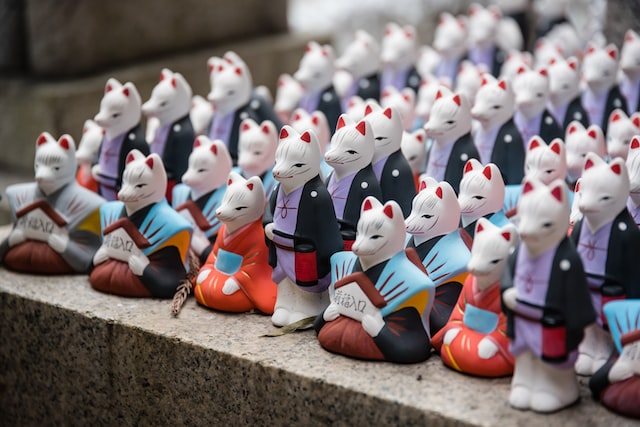
A site well worth exploring
Fushimi Inari Shrine is truly one incredible experience. Historically and religiously relevant, it’s one hard-to-beat excursion that even the not-so-spiritual visitors can appreciate. The mountain tour alone, prefaced by passing through the incredible red torii tunnels is nothing short of surreal. It’s like stepping into a different world. It doesn’t hurt that on your way up, you are greeted with pristine nature, stunning scenery, and some wonderful panoramic views of the city below. If you ever find yourself in Kyoto with only enough time to spare to visit one shrine, make it Fushimi Inari. It will be a visit you will forever cherish!
